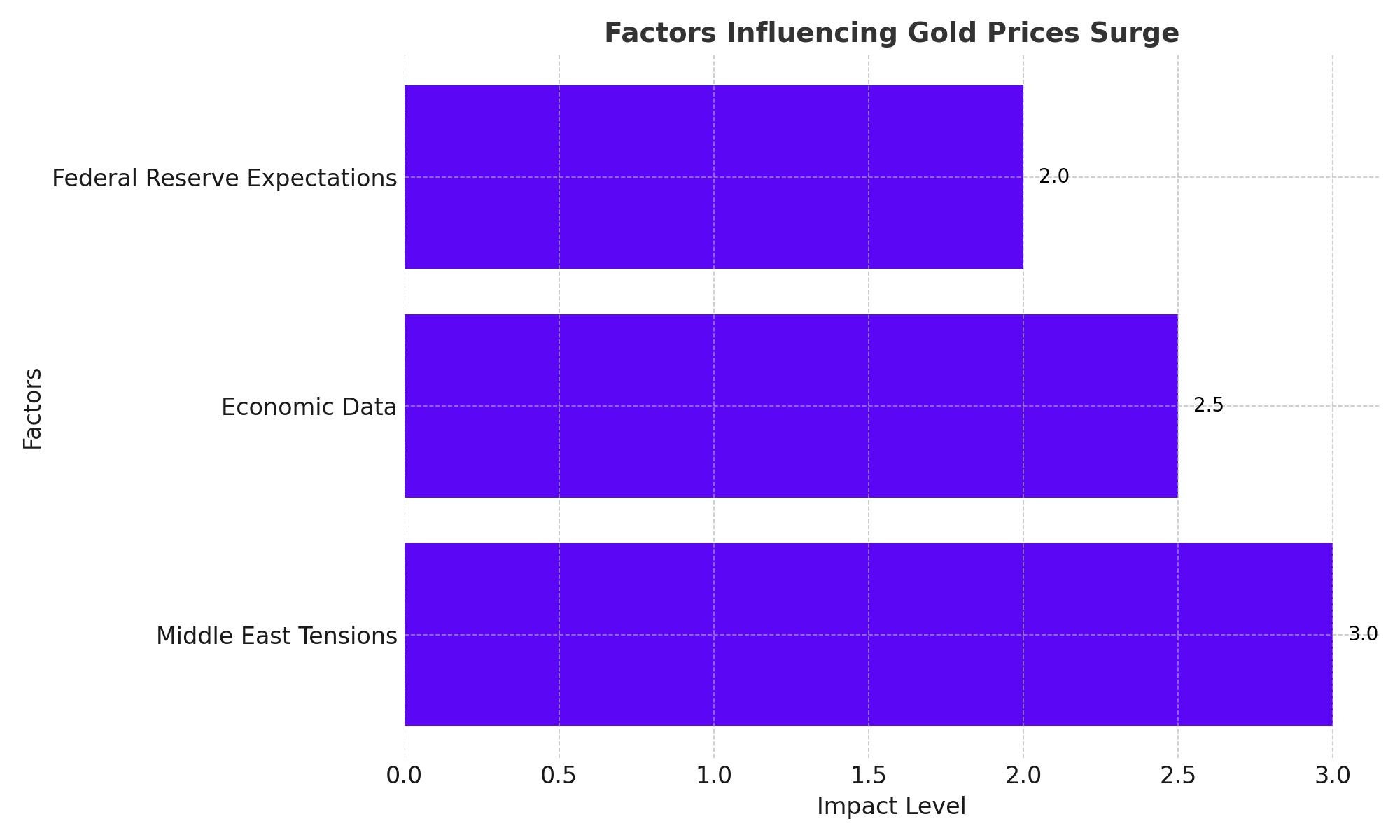
Gold Prices Surge Amid Expectations of Federal Reserve Rate Cuts
Weaker US Dollar and Softer Economic Data Drive Gold to New Highs, Analysts Predict Further Gains | That's TradingNEWS
Gold Prices Surge Amid Expectations of Federal Reserve Rate Cuts
Gold Reaches New Highs as US Dollar Weakens
Gold (XAU/USD) has experienced a significant rally, climbing to the $2,365 area, its highest level since June 21. This surge is largely attributed to the market's anticipation that the Federal Reserve (Fed) will implement interest rate cuts in September and December, following softer US macroeconomic data. The US Dollar (USD) has subsequently weakened, reaching a three-week low, which has bolstered gold prices. Despite a prevailing risk-on environment that could limit gold's upward momentum, traders are cautious, awaiting the release of the US monthly employment details, particularly the Nonfarm Payrolls (NFP) report.

Gold's Technical Performance and Future Projections
Gold prices have continued to make gains, reaching highs of $2,360, a level last seen in mid-June. The price action in the past month has seen gold bottom out around $2,300 and break through trendline resistance from the May highs, moving above the 50-day simple moving average (SMA). Further gains are anticipated, with targets set at $2,390 and the mid-May high of $2,450.
Impact of US Economic Data on Gold Prices
Recent US economic data has played a crucial role in driving gold prices higher. The US non-farm payrolls report showed an increase of 206,000 jobs in June, slightly above the expected 190,000. However, job growth estimates for May and April were revised downwards, and the unemployment rate rose to 4.1%, above the expected 4.0%. Following this data, market confidence in a September rate cut has remained high, with a 72% implied probability, and traders are also anticipating a potential second rate cut in December. Lower interest rates reduce the opportunity cost of holding non-yielding assets like gold, making it more attractive to investors.
Analysis by the World Gold Council
According to the World Gold Council (WGC), the gold market could see a rangebound performance in the second half of the year. The WGC analyzed four main drivers of gold: opportunity cost, economic expansion, risk and uncertainty, and momentum. Despite the potential for a rangebound return, the WGC notes that gold has already risen by more than 10% this year, and consensus suggests a similar performance for the full year. This implies that gold can still perform well even if interest rates remain as expected.
Global Market and Gold Prices
Globally, gold prices have edged up and are set for a second straight weekly gain. Spot gold rose 0.2% to $2,359.73 per ounce, with a weekly gain of over 1%. US gold futures were down slightly to $2,366.10. The US dollar's decline has made dollar-priced bullion more attractive to foreign buyers. Analysts like Tim Waterer from KCM Trade highlight that weaker US macro data has benefitted gold, and the market is closely watching the upcoming US nonfarm payrolls report.
Technical Analysis of Gold Prices
Technically, gold remains bullish on the daily chart, but it faces significant resistance at $2,368 to $2,371, which includes the 50% retracement of the $2,450 to $2,286 range and the top of the daily cloud. Clearing these obstacles would signal a continuation of the recovery from the higher base around the $2,290 zone, exposing targets at $2,387 and $2,400. Initial support is found at $2,349, with further support at $2,337 to $2,330, marked by the daily Kijun/ Tenkan-sen convergence. A loss of these supports would turn the outlook bearish.
Market Sentiment and Future Outlook
Market sentiment remains cautiously optimistic. The expectation of a Fed rate cut, coupled with softer US economic data, supports a bullish outlook for gold. However, any deviation from these expectations, such as stronger-than-expected economic data, could dampen the bullish sentiment. Analysts will continue to monitor key economic indicators, including the labor market data, to gauge the Fed's future policy decisions.
Conclusion
Gold's recent performance reflects a complex interplay of macroeconomic factors, technical indicators, and market sentiment. While the outlook remains positive, driven by expectations of Fed rate cuts and weaker US economic data, the market remains sensitive to any changes in economic indicators. Investors should stay vigilant and consider both the technical and fundamental aspects when making investment decisions in the gold market.
That's TradingNEWS
Read More
-
BITQ ETF Soars 66.55% as Bitcoin Blasts Past $124,000 — Crypto Equities Lead 2025 Rally
13.10.2025 · TradingNEWS ArchiveStocks
-
XRP ETFs XRPR, XRPI Slip as Ripple XRP-USD Holds $2.62 — SEC Fast-Track Could Ignite $20B
13.10.2025 · TradingNEWS ArchiveCrypto
-
Natural Gas Price Forecast - NG=F Steadies at $3.00 as U.S. Export Boom Tests Old Fields
13.10.2025 · TradingNEWS ArchiveCommodities
-
USD/JPY Price Forecast - Dollar to Yen Climbs to ¥152.28 as Japan’s Political Shakeup
13.10.2025 · TradingNEWS ArchiveForex



















